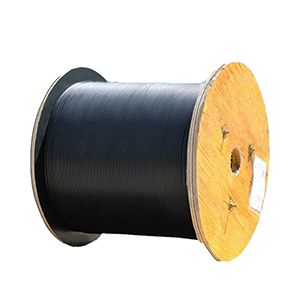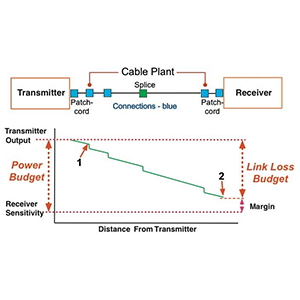Ethernet cables play an important role in the network. This article will explore the issues related to laying Ethernet cables inside walls. We first review the physical structure and transmission characteristics of Ethernet cables. Next, we explain the complexity of the environment inside walls and explain the problems that cables may face in this environment.
Then, we emphasize the selection of appropriate cable specifications, introduce standardized laying methods, and explain the interaction between cables and other pipelines. Finally, we analyze the precautions for laying inside concrete walls and gypsum board walls and provide users with relevant suggestions.
Basic characteristics of Ethernet cables
Ethernet cables are the basis for connecting network devices. Their main characteristics include transmission speed, signal stability and anti-interference ability. Common ones are Cat5e, Cat6 and Cat7, which support transmission rates from 100 Mbps to 10 Gbps. Cable length and type have a direct impact on network performance, are suitable for different application scenarios, and are a core part of modern network architecture.
1. Physical structure of Ethernet cable:
The basic physical structure of Ethernet cable includes:
- Conductor:
- Usually made of copper wire, used to transmit electrical signals.
- Insulation layer:
- Wrapped around the conductor, it plays an insulating and protective role.
- Shielding layer:
- The outer shielding layer can prevent the influence of external electromagnetic interference on the signal.
- Sheath:
- The protective sheath on the outer layer of the entire cable can enhance mechanical strength and waterproofness.
The design of these physical structures determines the transmission performance and usage environment of Ethernet cables.
2. Transmission characteristics of Ethernet cables:
The main transmission characteristics of Ethernet cables include:
- Bandwidth:
- Modern Ethernet cables can support transmission bandwidths up to 10Gbps.
- Anti-interference ability:
- The shielding layer of the cable can effectively suppress external electromagnetic interference and improve transmission quality.
- Transmission distance:
- The maximum transmission distance of different types of Ethernet cables ranges from 100 meters to several thousand meters.
- Reliability:
- Good mechanical strength and waterproofness make Ethernet cables highly reliable.
These characteristics determine the applicability and performance of Ethernet cables in different network environments. Proper selection of cable types is essential for stable and reliable Ethernet transmission.
Considerations for laying Ethernet cables inside walls
When laying Ethernet cables inside walls, consider the cable type, length, and direction to ensure signal quality. Avoid laying them parallel to power lines to reduce interference. Wall materials and ventilation conditions should also be considered to ensure that the cables are not damaged. At the same time, leave enough space and access points for future expansion and maintenance. Choosing a wiring method that meets the specifications will help improve the stability and security of the network.
1. Complexity of the internal environment of the wall:
When laying Ethernet cables inside the wall, the following environmental factors need to be considered:
- Wall materials:
- Different wall materials such as bricks and concrete have different effects on cable laying.
- Insulation layer:
- There may be insulation materials inside the wall, which will affect the heat dissipation and flame retardant performance of the cable.
- Pipeline layout:
- There may be other equipment such as power pipelines and heating pipes inside the wall, which need to avoid interference.
These complex internal wall environmental factors bring challenges to the laying and use of cables.
2. Problems that cables may face inside the wall:
The following problems may be encountered when laying Ethernet cables inside the wall:
- Cable damage:
- Vibration and extrusion inside the wall may cause damage to the cable sheath or conductor.
- Degraded signal quality:
- Wall materials may interfere with electromagnetic signals, resulting in reduced transmission quality.
- Poor heat dissipation:
- The internal environment of the wall may not be able to dissipate heat well, causing the cable to overheat and fail.
- Difficult maintenance:
- Once the cable fails, it will be very difficult to repair or replace it.
Therefore, when laying cables inside walls, it is necessary to carefully consider various environmental factors and take necessary protective measures to ensure that the Ethernet cable can operate reliably.
Precautions for laying Ethernet cables inside walls
When laying Ethernet cables inside walls, be careful to choose the appropriate cable type, such as Cat6 or Cat7, to ensure that it meets network requirements. Avoid running cables parallel to power cables to reduce electromagnetic interference. At the same time, consider the bending radius of the cable to avoid sharp turns that cause signal attenuation. Ensure that the wiring meets local building codes and leave appropriate access points for future maintenance and upgrades. Finally, maintain ventilation to prevent overheating.
1. Choose the right cable specifications:
When laying Ethernet cables in the wall, you should choose the following special cable specifications:
- Shielded cable:
- With a metal shielding layer, it can effectively suppress external electromagnetic interference.
- Low smoke halogen-free cable:
- In the event of a fire, it will not produce a large amount of toxic smoke, which is safer.
- Heat-resistant cable:
- With good heat resistance, it can adapt to the high temperature environment that may occur in the wall.
Choosing the right cable specifications is a prerequisite for ensuring safe and reliable wiring in the wall.
2. Standardized laying method:
The following measures need to be taken to properly lay Ethernet cables inside the wall:
- Pipe wiring:
- Put the cable into a metal or plastic pipe to improve mechanical protection.
- Fixed support:
- Clamps and other fixing measures should be used during cable laying to prevent the cable from hanging in the air.
- Fireproof sealing:
- Fireproof sealing measures need to be taken when passing through firewalls to prevent the spread of fire.
- Avoid excessive bending:
- When laying cables, the bending radius should be maintained appropriately and excessive bending should be avoided.
Standardized laying methods can effectively prevent mechanical damage to cables in the wall.
3. Pay attention to the mutual influence of cables and other pipelines:
When laying cables in the wall, you also need to pay attention to the mutual influence between Ethernet cables and other pipelines:
- Avoid electromagnetic interference:
- Sufficient distance or isolation should be maintained to prevent power cables from interfering with Ethernet cables.
- Prevent heat conduction:
- Keep away from heat sources such as heating pipes to prevent the cable from being heated and performance degradation.
Taking necessary isolation measures can effectively reduce the risk of interference and damage to cables inside the wall. In short, laying Ethernet cables inside the wall requires comprehensive consideration of various environmental factors, selecting appropriate cable specifications, and installing them in accordance with standardized methods to ensure that the cables can operate reliably and for a long time.
Suggestions for handling special scenarios
For suggestions on handling special scenarios, first evaluate environmental conditions such as humidity, temperature, and electromagnetic interference. Use anti-interference cables and appropriate protection measures to ensure signal stability. In high-interference areas, consider using optical fiber instead of Ethernet cables to improve transmission quality. In addition, reasonably layout access points to ensure coverage and network performance. Finally, regularly inspect and maintain equipment to detect potential problems in a timely manner to ensure smooth network operation.
1. Precautions for laying in concrete walls:
When laying Ethernet cables in concrete walls, pay special attention to the following matters:
- Choose the appropriate conduit method:
- The cables should be protected by metal pipes or plastic sleeves to avoid direct contact with concrete.
- The pipes must be able to withstand the pressure and vibration during the concrete pouring process.
- Protect the cables from damage:
- During the concrete pouring process, necessary protective measures need to be taken to prevent the cables from being squeezed or damaged.
- Metal sheaths can be used or reinforcement layers can be added to the cables to enhance protection.
- Leave enough space:
- Leave enough space in the concrete wall for future maintenance and repair of the cables.
These measures can effectively prevent the internal environment of the concrete wall from damaging the cables.
2. Tips for laying in gypsum board walls:
For gypsum board walls, the following methods can be used to lay Ethernet cables:
- Use cable troughs:
- Open a special cable trough on the surface of the gypsum board and embed the cables in it.
- This method can protect the cables from external damage.
- Use trenching:
- Dig cable trenches in the gypsum board wall and bury the cables.
- This method can hide the cables to the greatest extent and beautify the environment.
- Use special threading tubes:
- Insert plastic or metal threading tubes into the opened trenches to safely protect the cables.
Compared with concrete walls, gypsum board walls provide more flexible cable laying options, which helps to achieve beautiful and neat wiring effects. In short, for different types of wall materials, targeted protection measures need to be taken when laying Ethernet cables in the wall to ensure that the cables can run reliably and long-term.
Summary
Rational installation of Ethernet cables inside walls is key to ensuring network performance. Our company has long focused on the research and development and application of network infrastructure products and has rich practical experience. We provide a full range of Ethernet cables and their supporting installation tools to meet the needs of different network scenarios.
Our products use industry-leading technical solutions and have achieved excellent levels in transmission performance, reliability and service life. At the same time, our team of engineers will provide you with professional on-site guidance and training services to ensure that the deployed Ethernet cable solutions can meet your actual needs to the greatest extent. Contact us now to learn more.
Running Ethernet Cables on the Wall FAQ
Yes, you can run Ethernet cables through walls, but it’s essential to follow local building codes.
Use CAT5e or CAT6 cables for optimal performance; both are suitable for in-wall use.
Yes, use connectors rated for in-wall use, often labeled as “CM” or “CL2/CL3” rated.
Measure the distance from your network switch to the outlet location, adding extra for routing and turns.
Ideally, keep Ethernet cables at least a few inches away from electrical wires to avoid interference.
It’s not recommended; regular cables may not meet fire safety standards.
You’ll need a fish tape, drill, drywall saw, and cable stapler for installation.
Yes, but ensure they are properly bundled and spaced to prevent interference.
It depends on local regulations; check with your local building authority.
Use a punch-down tool for keystone jacks or modular plugs, ensuring proper wiring order.



